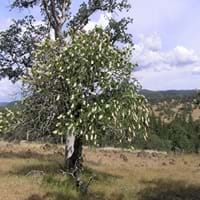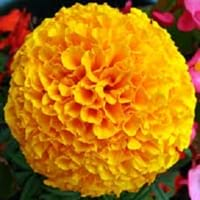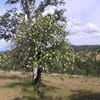Life Span
Perennial
Annual
Type
Shrub
Flowering Plants
Origin
California
Mexico, Central America
Types
Not Available
Not Available
Number of Varieties
Not Available
Habitat
Hillside
Forest edges, gardens, Grassland, Homesteads, Rocky areas, Woods
USDA Hardiness Zone
7-9
9-11
Sunset Zone
3a, 3b, 4, 5, 6, 7, 8, 9, 10, 14, 15, 16, 17, 18, 19, 20, 21, 22, 23, 24
A1, A2, A3, H1, H2, 1a, 1b, 2a, 2b, 3a, 3b, 4, 5, 6, 7, 8, 9, 10, 11, 12, 13, 14, 15, 16, 17, 18, 19, 20, 21, 22, 23, 24
Habit
Oval or Rounded
Upright/Erect
Flower Color
White, Pink
White, Ivory
Flower Color Modifier
Bicolor
Bicolor
Fruit Color
Yellow Brown
Not Available
Leaf Color in Spring
Light Green
Dark Green
Leaf Color in Summer
Green
Dark Green
Leaf Color in Fall
Not Available
Dark Green
Leaf Color in Winter
Not Available
Light Green
Leaf Shape
Oval
Arrowhead
Plant Season
Spring, Summer, Fall, Winter
Summer, Fall
Sunlight
Full Sun, Partial Sun
Full Sun
Growth Rate
Medium
Very Fast
Type of Soil
Clay, Loam, Sand
Loam, Sand
The pH of Soil
Acidic, Neutral
Neutral, Alkaline
Soil Drainage
Well drained
Well drained
Bloom Time
Late Spring, Early Summer
Indeterminate
Tolerances
Drought, Salt
Drought
Where to Plant?
Ground
Ground, Pot
How to Plant?
Seedlings
Stem Planting, Vegetative Reproduction
Plant Maintenance
Medium
Medium
Watering Requirements
Keep the ground moist but not water-logged, Requires regular watering, Requires watering in the growing season
Allow soil to be completely dry in between waterings, Requires regular watering, Water occasionally
In Summer
Lots of watering
Lots of watering
In Spring
Moderate
Moderate
In Winter
Average Water
Average Water
Soil pH
Acidic, Neutral
Slightly Alkaline
Soil Type
Clay, Loam, Sand
Well drained
Soil Drainage Capacity
Well drained
Well drained
Sun Exposure
Full Sun, Partial Sun
Bright Indirect Sunlight
Pruning
Remove damaged leaves, Remove dead leaves, Remove dead or diseased plant parts
Prune regularly
Fertilizers
All-Purpose Liquid Fertilizer
All-Purpose Liquid Fertilizer
Pests and Diseases
Red blotch
Red blotch
Plant Tolerance
Drought
Drought
Flower Petal Number
Not Available
Double
Fragrant Bark/Stem
No
Yes
Foliage Texture
Medium
Medium
Foliage Sheen
Glossy
Matte
Attracts
Birds, Butterflies
Butterflies
Allergy
Not Available
no allergic reactions
Aesthetic Uses
Beautification, Landscape Designing, Showy Purposes
Beautification
Beauty Benefits
Not Available
Not Available
Environmental Uses
Air purification
Air purification
Medicinal Uses
Not Available
Gastrointestinal disorders, Skin Disorders
Part of Plant Used
Fruits
Whole plant
Other Uses
Decoration Purposes, Showy Purposes, Used as Ornamental plant
Decoration Purposes, Not Available
Used As Indoor Plant
No
Yes
Used As Outdoor Plant
Yes
Yes
Garden Design
Dried Flower, Everlasting, Feature Plant, Hedges, Mixed Border, Screening, Wind Break
Foundation, Houseplant, Mixed Border, Rock Garden
Botanical Name
AESCULUS californica
TAGETES erecta 'French Vanilla'
Common Name
California Buckeye
African Marigold
In Hindi
कैलिफोर्निया Buckeye
अफ्रीकी गेंदा
In German
California Buckeye
Studentenblume
In French
California Buckeye
Marigold africaine
In Spanish
California Buckeye
caléndula africana
In Greek
Καλιφόρνια Buckeye
Αφρικής κατιφές
In Portuguese
California Buckeye
marigold africano
In Polish
Kalifornia Buckeye
afrykański nagietka
In Latin
California Buckeye
African pingit vaccinia caltha
Phylum
Magnoliophyta
Not Available
Class
Magnoliopsida
Magnoliopsida
Order
Sapindales
Asterales
Family
Sapindaceae
Asteraceae
Clade
Angiosperms, Eudicots, Rosids
Angiosperms, Asterids, Eudicots
Tribe
Not Available
Tageteae
Subfamily
Hippocastanoideae
Asteroideae
Season and Care of California Buckeye and African Marigold
Season and care of California Buckeye and African Marigold is important to know. While considering everything about California Buckeye and African Marigold Care, growing season is an essential factor. California Buckeye season is Spring, Summer, Fall and Winter and African Marigold season is Spring, Summer, Fall and Winter. The type of soil for California Buckeye is Clay, Loam, Sand and for African Marigold is Loam, Sand while the PH of soil for California Buckeye is Acidic, Neutral and for African Marigold is Neutral, Alkaline.
California Buckeye and African Marigold Physical Information
California Buckeye and African Marigold physical information is very important for comparison. California Buckeye height is 460.00 cm and width 460.00 cm whereas African Marigold height is 45.70 cm and width 25.40 cm. The color specification of California Buckeye and African Marigold are as follows:
California Buckeye flower color: White and Pink
California Buckeye leaf color: Light Green
African Marigold flower color: White and Ivory
- African Marigold leaf color: Dark Green
Care of California Buckeye and African Marigold
Care of California Buckeye and African Marigold include pruning, fertilizers, watering etc. California Buckeye pruning is done Remove damaged leaves, Remove dead leaves and Remove dead or diseased plant parts and African Marigold pruning is done Prune regularly. In summer California Buckeye needs Lots of watering and in winter, it needs Average Water. Whereas, in summer African Marigold needs Lots of watering and in winter, it needs Average Water.





